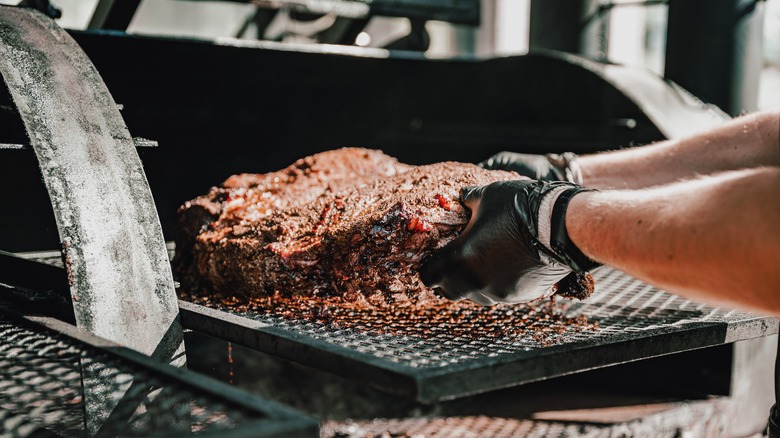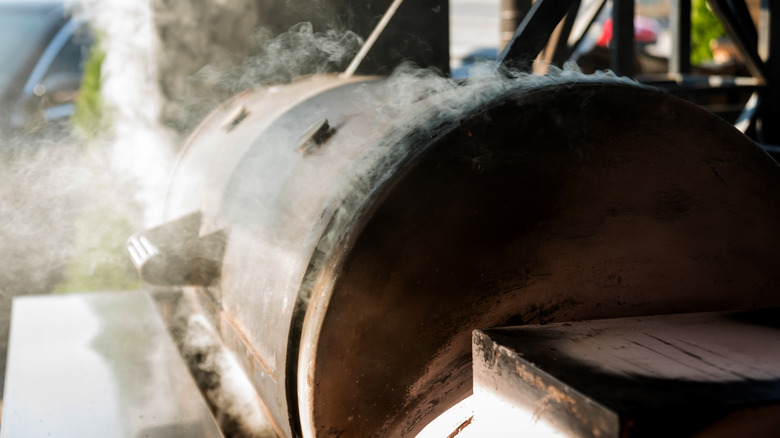Why You Don't Want To Use A High Temperature When Smoking
An increasingly popular means of cooking, smoking is a unique process that results in immensely flavorful items (typically meats) which have been permeated and cooked entirely by smoke. This imparts the iconic sweetly toasted flavor into every nook and cranny of the food, no matter if it's a short rib or a turnip. The process itself, though, is contested and diverse: from cold smoking to hot smoking, and makeshift, custom home smokers made from charcoal grills to state-of-the-art, very expensive apparatuses, the smoking landscape is characterized by its sheer breadth.
An inherently slow cooking method, smoking utilizes slow, off-heat, indirect cooking in order to flavor and tenderize. Don't go in expecting a quick thing where dinner is on the table in an hour; generally, the lowest amount of time a properly smoked food will take is a few hours (per Extraordinary BBQ), while some of the more legitimate, heavier projects could take nearly a full day. In almost all instances, the smoker (or jury-rigged smoker) should cook the food at a constant, very low heat. Of course, the temperatures, smoking wood, and cooking time will differ depending on what you're cooking — a whole brisket is quite different than a few skin-on, bone-in chicken thighs.
While smoking is often thought of as a meat-only affair, perhaps try fruits or vegetables. They practically can't be overcooked (or undercooked) and the smoke imparts a fascinating savory note. Just keep an eye on the thermometer.
It helps prevent your smoked food from drying out
Generally, you want to ensure that you're not smoking at too high of a temperature (per Food & Wine). According to Chef Jason Goodman, smoking things too hot will result in a dry, less-smoky product. He advises using "moist wood," keeping a close eye on the smoker, and cooking low and slow. MasterClass recommends using a meat thermometer to keep things in check since it's tough to tell "by touch or sight alone."
In the instance that your meat winds up on the dry side because of too-high temperatures, though, there are a few ideas to fix this. Diversify your serving methods by shredding the smoked meat and serving it with pasta (or better yet, add it to your sauce, masking its dryness by rehydrating it a bit), in tacos (covered with condiments and salsas), in sandwiches (also covered in condiments), or simply served with a creamy side (polenta, potatoes, grits) and a heaping amount of sauce. You can also invest in a high-quality spritz bottle to literally spray the food with water or even vinegar throughout the smoking process, as noted by MasterClass.
Smoked BBQ Source notes that it's also important to "respect [your] finished meat," which involves resting and then slicing or cutting it properly, which is typically 'against the grain," while also keeping thickness in mind. Now that you have this information, you can hopefully go forth and smoke with confidence.

